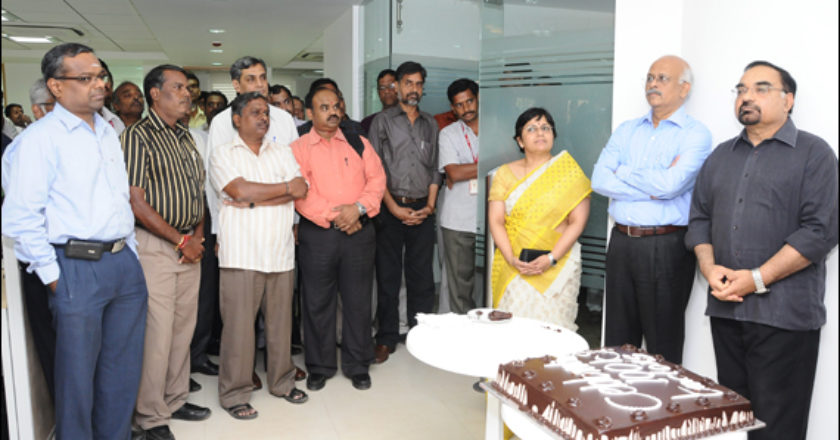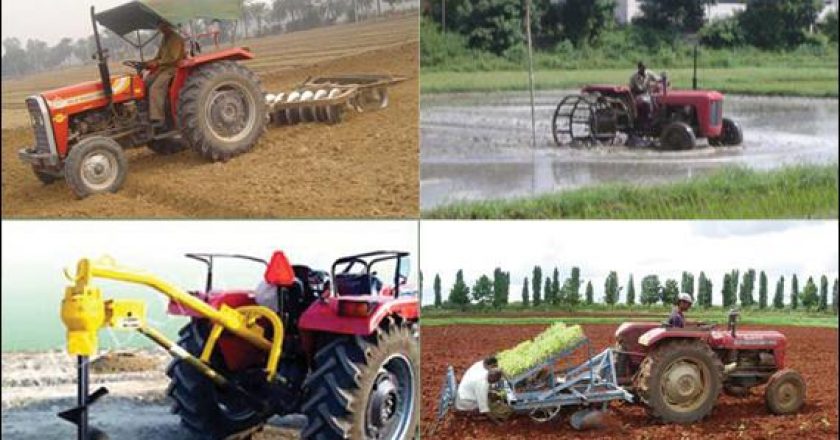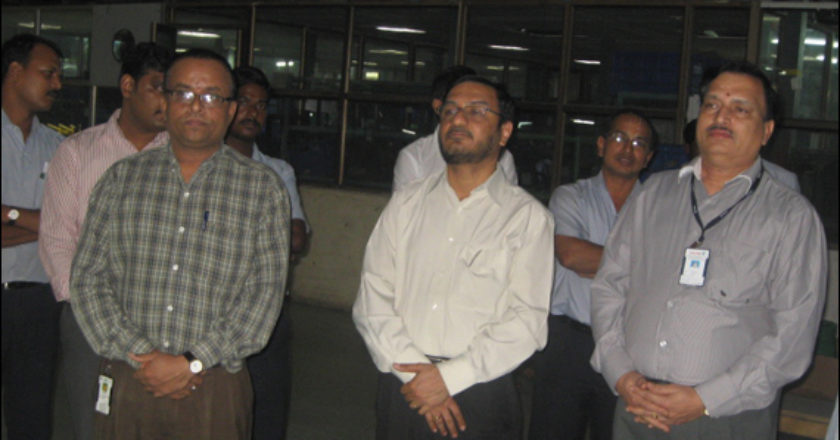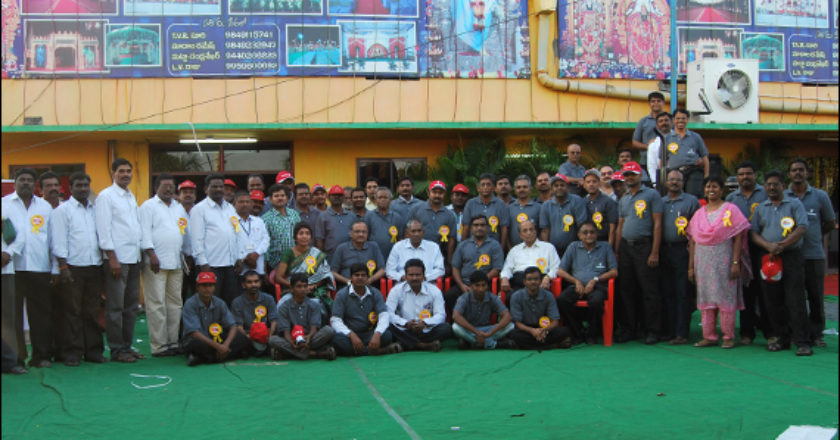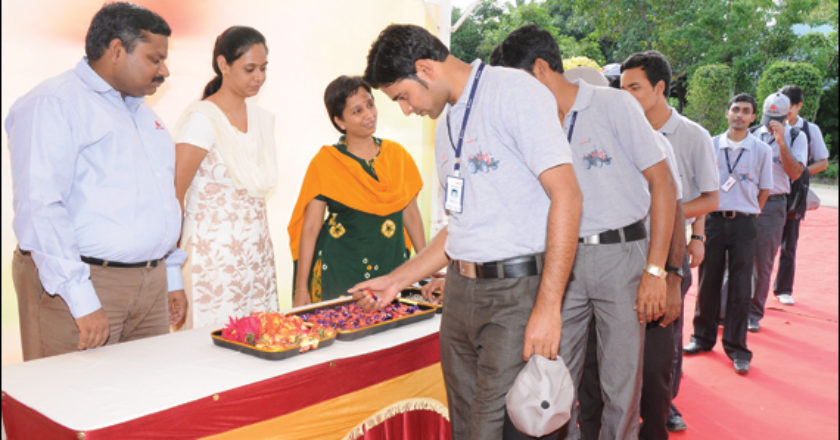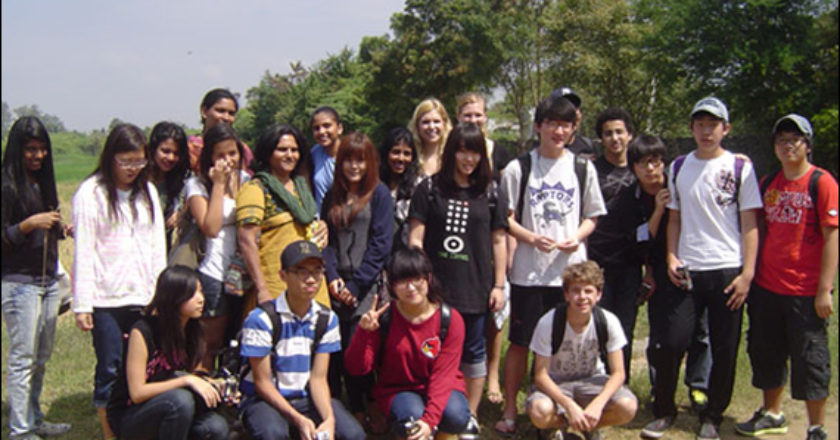Farm tractor designs and styles differ greatly. Tractors are often used on a daily basis for the several agricultural and non agricultural tasks by attaching or operating the light, medium to heavy implements, equipments and machineries according to the requirement and HP of tractors. Tractors are very versatile, it can be used from sandy (light textured), loamy (medium textured) to clayey (heavy textured) soil at different topography and agro climatic conditions. Earlier the proportion of tractor usage in agricultural and non-agricultural work was 70:30. This proportion has increased to about 55: 45 over the past two to three years. It is expected to reach 50:50 in (agricultural: non-agricultural applications) in the coming years. The major application of farm tractors for agricultural and non agricultural sectors are given below:
Agricultural sector
• Preparing the field by attaching different implements, equipments and machinery for tilling, disking, harrowing, leveling and forming of beds, bunds, furrow & ridges (Fig1)
• Puddling of rice field by attaching puddling implements, equipments & machinery (Fig 2)
• Digging of pits by attaching post hole digger to plant saplings and erect the poles (Fig 3)
• Sowing, planting and transplanting of crops by attaching different types of seed drills, planters and seedling transplanters (Fig 4)
• Application of organic manure in line or rows by attaching a trailer and organic manure applicator
• Broadcasting, side dressing and foliar spraying of inorganic fertilizers by attaching the fertilizer broad caster, ferti-drills and sprayers (Fig 5)
• Intercultural operation in wide spaced standing crop by attaching different types of implements (Fig 6)
• Spraying of pesticides in field crops and tress by operating different types of sprayers (Fig 7)
• Pumping the ground, canal, river, open well, pond or stored water by operating pumps (Fig 8)
• Harvesting of crops by attaching different reapers, harvesting machines and tractor power driven combine harvester (Fig 9)
• Pruning of trees by attaching hydraulic operated pruning tools (Fig 10)
• Harvesting of fruits by attaching hydraulic operated elevators and plucking tools (Fig 11)
• Crushing of sugarcane by operating sugarcane crusher. (Fig 12)
• Threshing of crops by operating threshers (Fig 13)
• Winnowing of crops by operating winnowers (Fig 14)
• Hauling of water tanker to irrigate perennial trees and nursery (Fig 15)
• Hauling of farm inputs and produce (Fig 16)
• Transportation of farm workers
• Precision farming by installing the GPS (Global Positioning System) technology in tractor to navigate the farm equipment for sowing, planting, intercultural operation, spraying pesticides and herbicides, applying fertilizers and harvesting accurately (Fig 17)
• Mowing & rolling the lawns & golf courses by attaching the mowers and rollers (Fig 18)
• Cutting weeds by attaching weed slashers
Non-agricultural sector
• Developing and leveling of roads, building sites, dams etc by attaching dozer blade, bucket, hoe and laser guided leveler (Fig 19)
• Hauling of road and building and construction materials (Fig 20)
• Powering of building and road construction equipments
• Using for defense & airport applications to tow baggage
• Removing the snow by attaching snow blower and grader (Fig 21)
• Breaking of rock with tractor mounted pneumatic compressors (Fig 22)
• Generating electricity by operating the alternator/generator (Fig 23)
Tractors today accept a wider variety of attachments than ever before, making them increasingly more versatile. Each year, manufacturers offer more new and innovative improvements to their models. There is a still large untapped potential to explore. It is estimated that the industry sale (including exports) to grow at a Compound Annual Growth Rate (CAGR) of 7-9 per cent in volume terms and reach a size of 6.4 lakh units by 2014-15. Domestic demand is projected to grow by 6-8 per cent by 2014-15 whereas exports are estimated to grow by 16-19 per cent.

